Top Technology Trends and Disruptions for 2019
A new wave of technologies including e-mobility, Industry 4.0, edge computing, artificial intelligence, and augmented reality will bring about big changes to society.
The technology trends we are watching with great anticipation in 2019 isn’t a cool new device or a smaller, faster, better version of something we’ve seen before. It’s not a trip to Mars, a robot, or anything designed by Elon Musk. It’s something much bigger. It’s the promise of widespread, transformational change in society’s infrastructure and functions brought about by connected technologies.
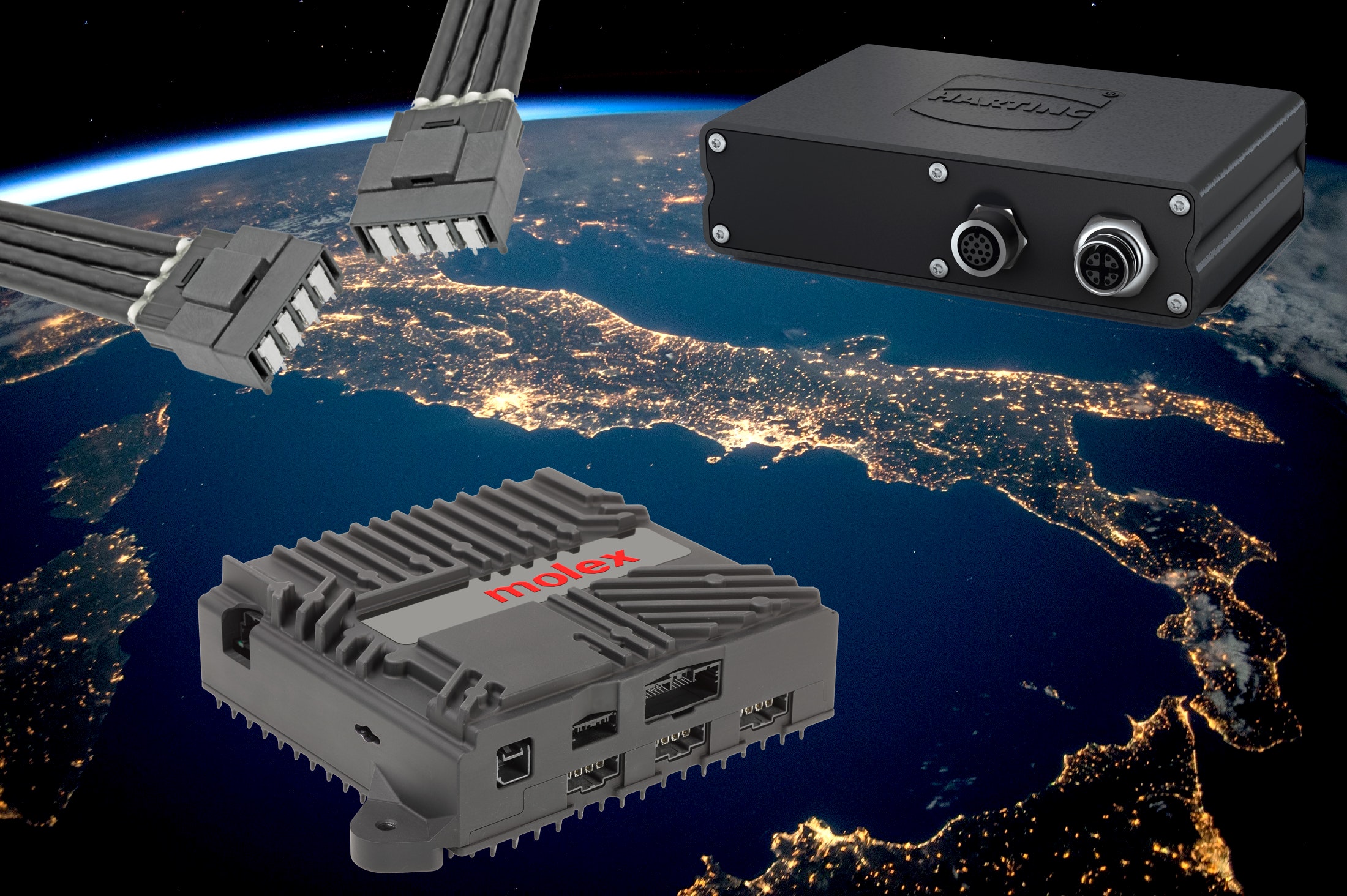
We’ve seen dazzling progress on a number of fronts, but this year a fleet of factors will converge to make concepts like connected cities, autonomous vehicles, the Internet of Things, and the Fourth Industrial Revolution not just theoretical, but real. Key among them is the arrival of 5G. Exponentially faster data rates will make the Internet of Things (IoT) fully implementable by late 2019 into 2020 and beyond. Complementary electronics, such as durable, precision connectors, are joined by powerful sensors and antennas to create a generation of devices that are astoundingly intelligent. The way we do things at home, at work, and on the roads is about to change. Here’s how.
E-Mobility Arrives

We’ve been hearing about autonomous vehicles for a while now, but development has been start-and-stop, with high-profile stumbles and delays. We’re about to move past that phase. The rapid refinement of camera, LiDAR, radar, and sensor technologies is converging in the first generation of fully autonomous vehicles. Trials are in progress now in several cities around the world, and as the technology solidifies and standardizes, public perception will rapidly catch up.
“When airbags were first introduced, they caused deaths, but technology advanced and now we accept that they save lives,” said Mike Gardner, director of advanced technology market development, Transportation and Industrial, at Molex. “The public is cautious now, but communities are embracing the idea of autonomous people-movers, and we quickly will see acceptance of autonomous vehicles across the board.”
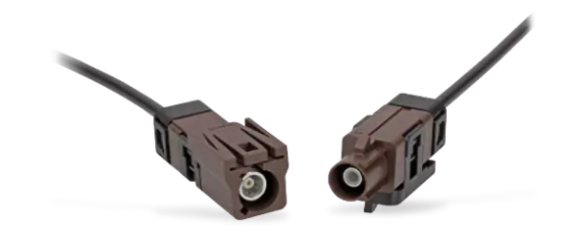
The Molex High-Speed FAKRA Mini Coaxial Cable Solution delivers 20 GHz of data speed for the connected vehicle, supporting radar, camera, LiDAR, and sensor applications.
And then what? Some people will be able to watch a movie or conduct business during their commutes. But it’s more than that. Transportation as we know it — people driving while texting, congested parking, car ownership — will be disrupted. “The impact of automated vehicles on society will be as transformative as the arrival of the age of the internet and personal computers coming to the consumer,” said Gardner.
A world with autonomous vehicles will impact traffic patterns, transportation infrastructure, and ride sharing. Advancements in battery storage capacity mean many autonomous vehicles will also be electric vehicles. “Every major city in the world is dealing with pollution,” said Gardner. “They are breaking down the barriers needed to accommodate EVs in society, including adding charging stations. By the end of the next decade, a third of all vehicles on the road will be EVs.”
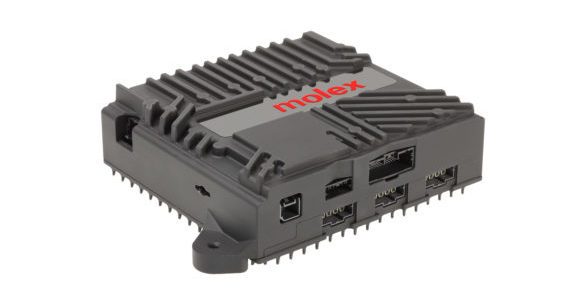
Molex’s future-ready, automotive-grade gateway is delivering a seamless integration across multiple hardware and software systems and legacy automotive protocols.
Connector companies developing components for e-mobility applications are also tasked with keeping size and weight down, in ruggedized and reliable packages. The electronic content in a single vehicle is significant, even though a lot of weight is shed by getting rid of the combustible engine. These vehicles require connectivity products that can handle high voltages and high currents in rugged environments.
“There is a huge impact on data requirements. The vehicle is connecting back to the cloud, to infrastructure, to other vehicles. As demand for higher speeds increase and latency decreases, we look for ways to address higher data rates. Whenever we bring out a new product, though, no matter how fast it is, the engineers want more. That’s how fast this is evolving.” says Kyle Williams, director of strategic development, Transportation and Industrial, at Molex.
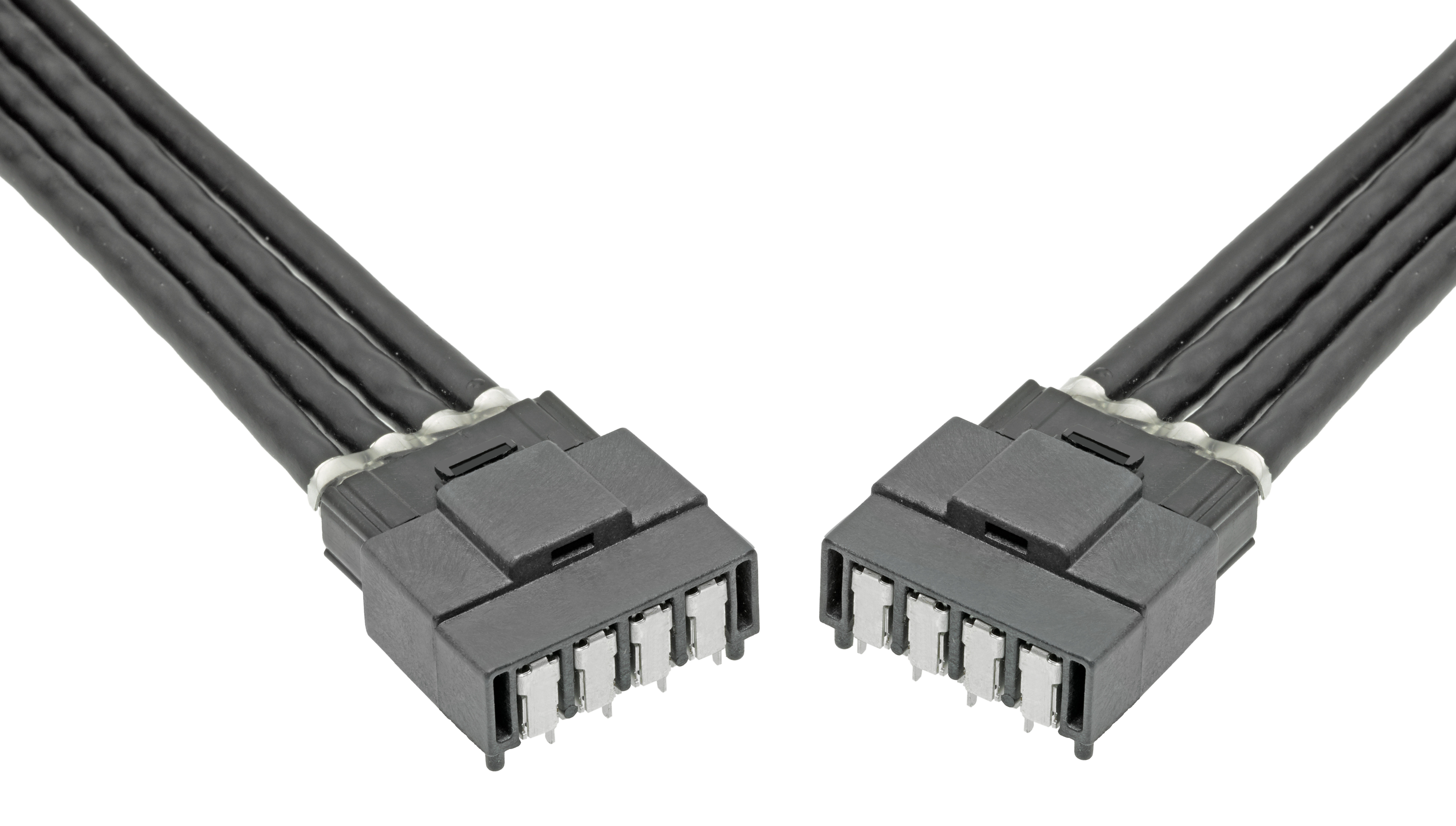
The Molex HSAutoGig high-speed Ethernet solution delivers 10 Gigabyte data speeds and the reliable interface necessary to connect smart-sensor systems and Ethernet network platform in the drive toward greater vehicle autonomy.
“This is the most exciting thing I’ve seen in all my years in automotive technology,” he said. “If you had told me 10 years ago we’d be so far along in the development of these technologies, I’d never have believed it.”
Industry 4.0

The Fourth Industrial Revolution is upon us. The integration of robotics, automation, real-time data, and IoT connectivity across equipment on the floor, farm, or factory is transforming the manufacturing experience. Factories and warehouses that utilize smart technology have the potential to be safer and more efficient. Automated monitoring systems will calculate material needs and monitor supply levels, maintain quality levels, and reduce downtime with predictive maintenance. Add in automated small vehicles to transport product and supplies, and there’s no denying what will be disrupted: workers. Some estimates predict that more than 50% of factory jobs will be lost to automation in the next three years.
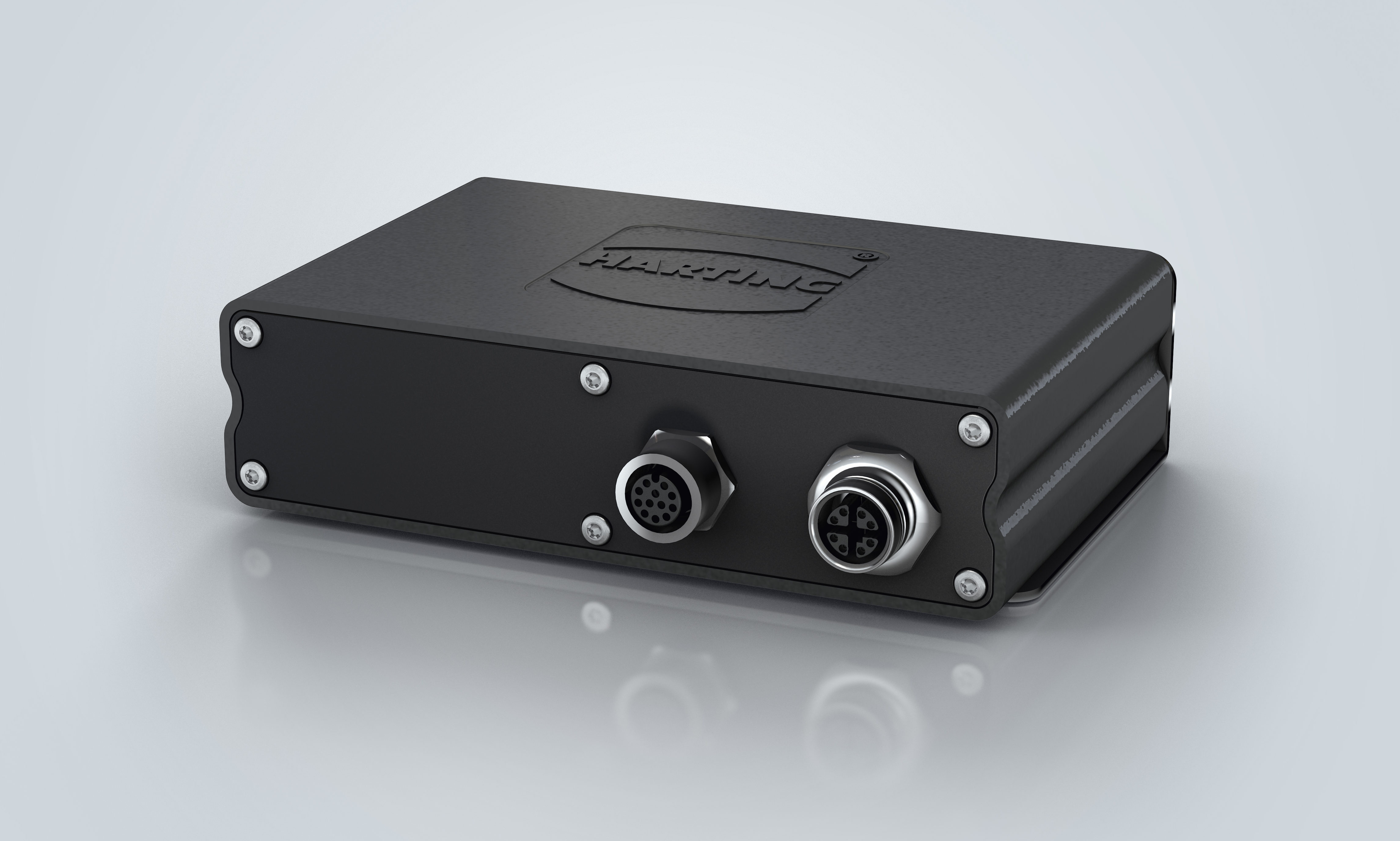
The HARTING MICA (Modular Industry Computing Architecture) makes it possible to store, evaluate, and process data directly within application environments. It can be configured with individual hardware, freely available software, and associated interfaces for use in industrial environments.
Or perhaps the human part is only changing, evolving into high-tech positions rather than labor roles. Cyber security will become a necessary part of factory work. Engineers will be needed to improve adjacent technologies and innovate towards Industry 5.0, in which a human interface and robotics will converge.
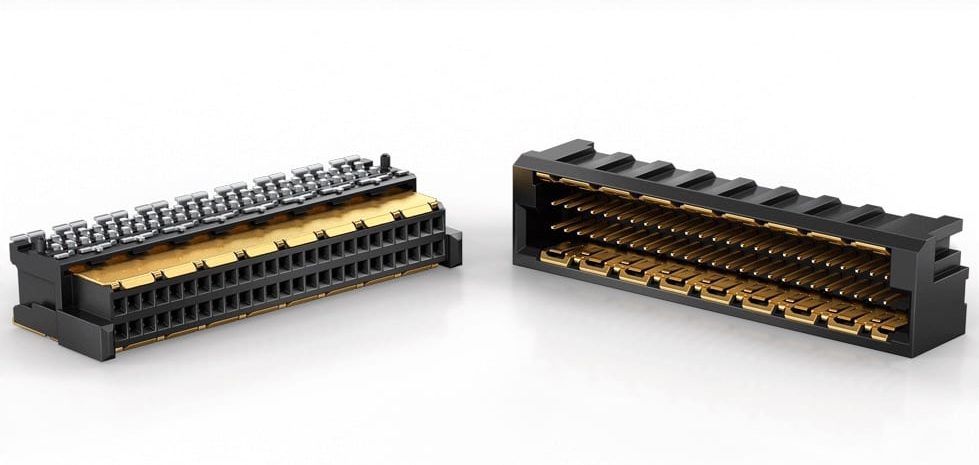
ERNI’s MicroSpeed connector system offers outstanding signal integrity and data rates up to 25+ Gb/s for the industrial automation environment.
Edge Computing
For years, we’ve seen data centers escalating in size and power. As the IoT has expanded, exponentially more devices are communicating with the cloud, accessing digital content, software, and services in a massive, constant exchange of data that is largely controlled by a limited number of cloud providers.
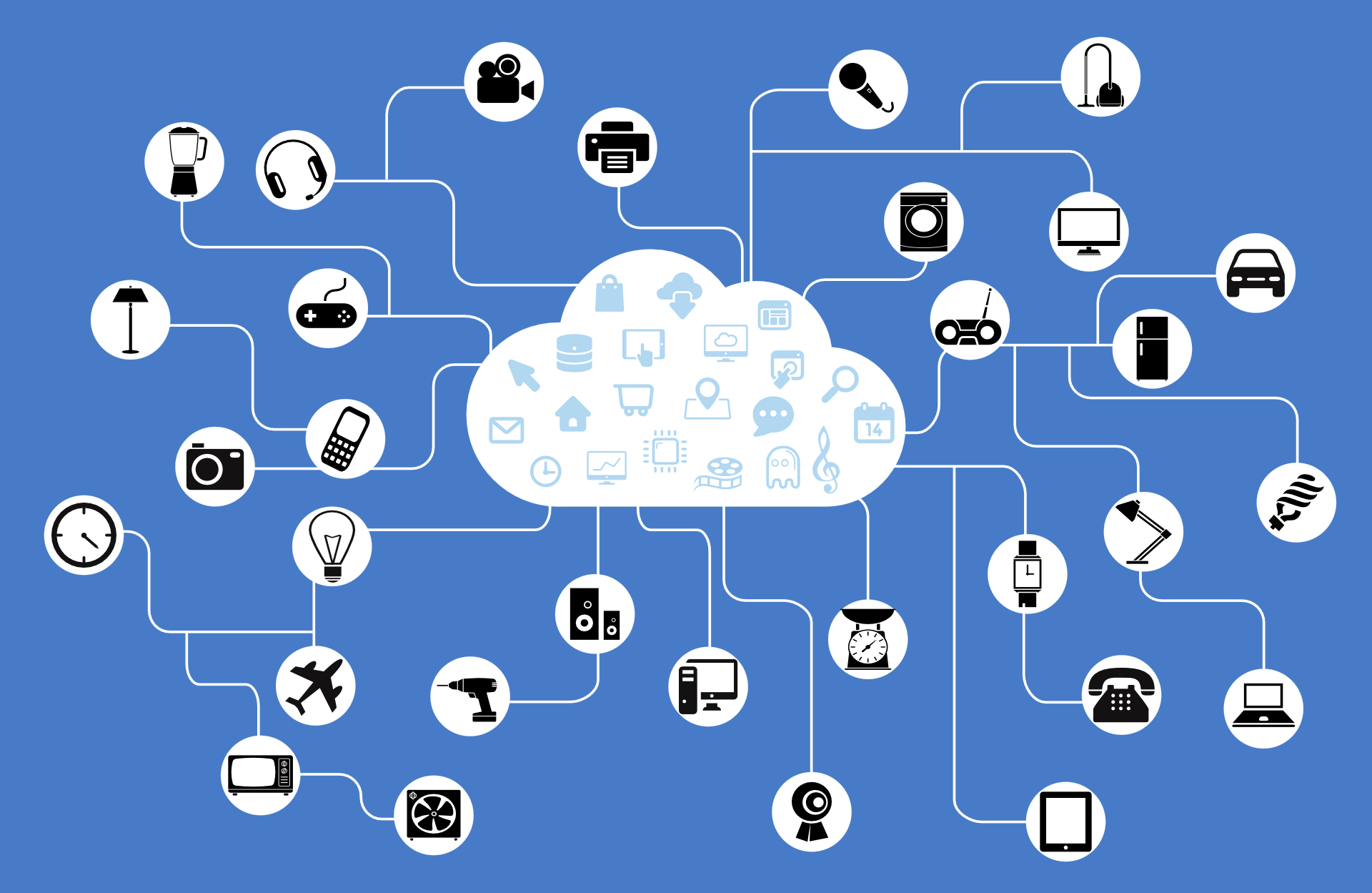
In 2019, some of that control will begin to decentralize, moving to the “edge” of the cloud. Instead of data centers doing most of the computing (and consuming most of the energy), some functionality will move to individual devices embedded with sensors, artificial intelligence (AI) chips, and machine-learning and processing capabilities. Energy usage, security responsibilities, and server costs will become more localized. Products ranging from home electronics to autonomous vehicles will become edge devices.
Reducing the latency and delays involved in communicating with the cloud will enable fast and vitally responsive functionality within the device. The benefit of the edge cloud units is to drive the latency down towards the 5G requirements of 1–2ms compared to today’s LTE of 150-250ms. Instead of sending the signal across sub-Atlantic cables or long distances via fiber to the centralized cloud data centers, the computing will occur closer to the devices and telecom radios or 5G Active Antenna Systems (AAS).
According to TE Connectivity, many experts believe the edge cloud units will eventually move even closer to the telecom mast or SITE, or end up in the mast to get closer to the AAS radio, or even be integrated with the baseband unit, and in the end, inside the AAS radio.
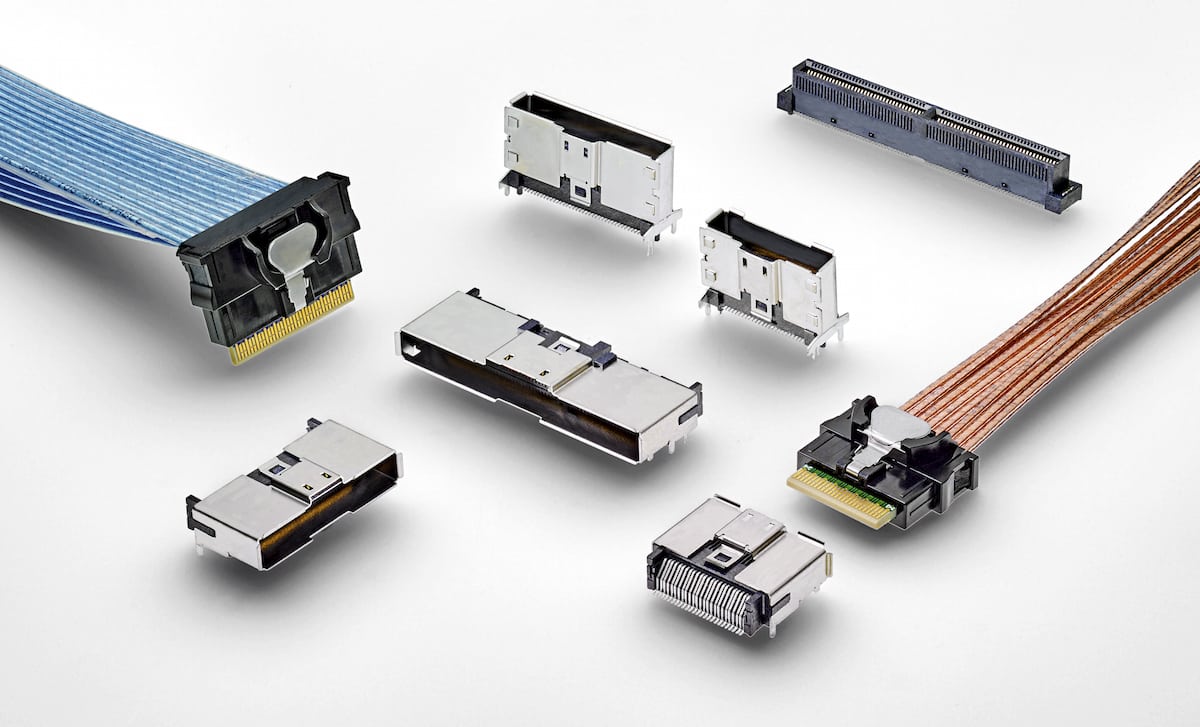
TE Connectivity’s Sliver internal cabled interconnect system provides a solution to data rate increase challenges.
Device design is shifting to include smart sensors with integrated microcontrollers, actuator-driver chips, and modules, which change the role and requirements of the connectors and cables involved in a system.
“TE Connectivity’s high-speed and high-performance interconnects and power products enable highly sensitive data to be transferred from the device to the cloud and back again,” said Rickard Barrefelt, TE Connectivity, EMEA field application engineering manager.
“With our high-performance antennas in the devices and in the Telco providers Active Antenna Systems, the data and power will run from the AAS systems down to the edge cloud units through TE FullAXS Systems that support ruggedized fiber/power/Ethernet quick-install interfaces. The signals then enters the edge cloud units through our high-speed IO ports with thermal and EMI protection features through TE Sliver internal high speed cabling systems, which reduce latency and increase system flexibility. The signal is then distributed via the subsystems in the edge cloud units either by our Strada Whisper Backplane and Board-to-board products or our high-speed DAC cables and then back up again to the Telco Mast & AAS systems and back wirelessly to the device. The entire network’s power requirements will be supported with TE’s broad power portfolio, including board-to-board and cabled power distribution for both internal and external applications.”
Artificial Intelligence and Augmented Reality
AI will become a more important part of electronics systems as factors like edge computing and 5G make our cars, devices, and industrial systems smarter. The concept first came to attention in applications such as gaming, but every sector, from medical devices to building infrastructure, will be impacted.

“Artificial Intelligence (AI), and in particular machine learning and deep learning, are among the disruptive technologies for embedded vision today. These technologies are enabling us to build smarter systems,” said Michael Uyttersprot, market segment manager, Avnet Silica. “For example, while in the past, the features of objects needed to be programmed specifically by a developer to conduct object recognition, today’s implementation with deep learning will help machines to automatically learn those features based on many examples of pictures or videos. The outcome is that these machines can recognize objects faster and with a higher accuracy than a human.”
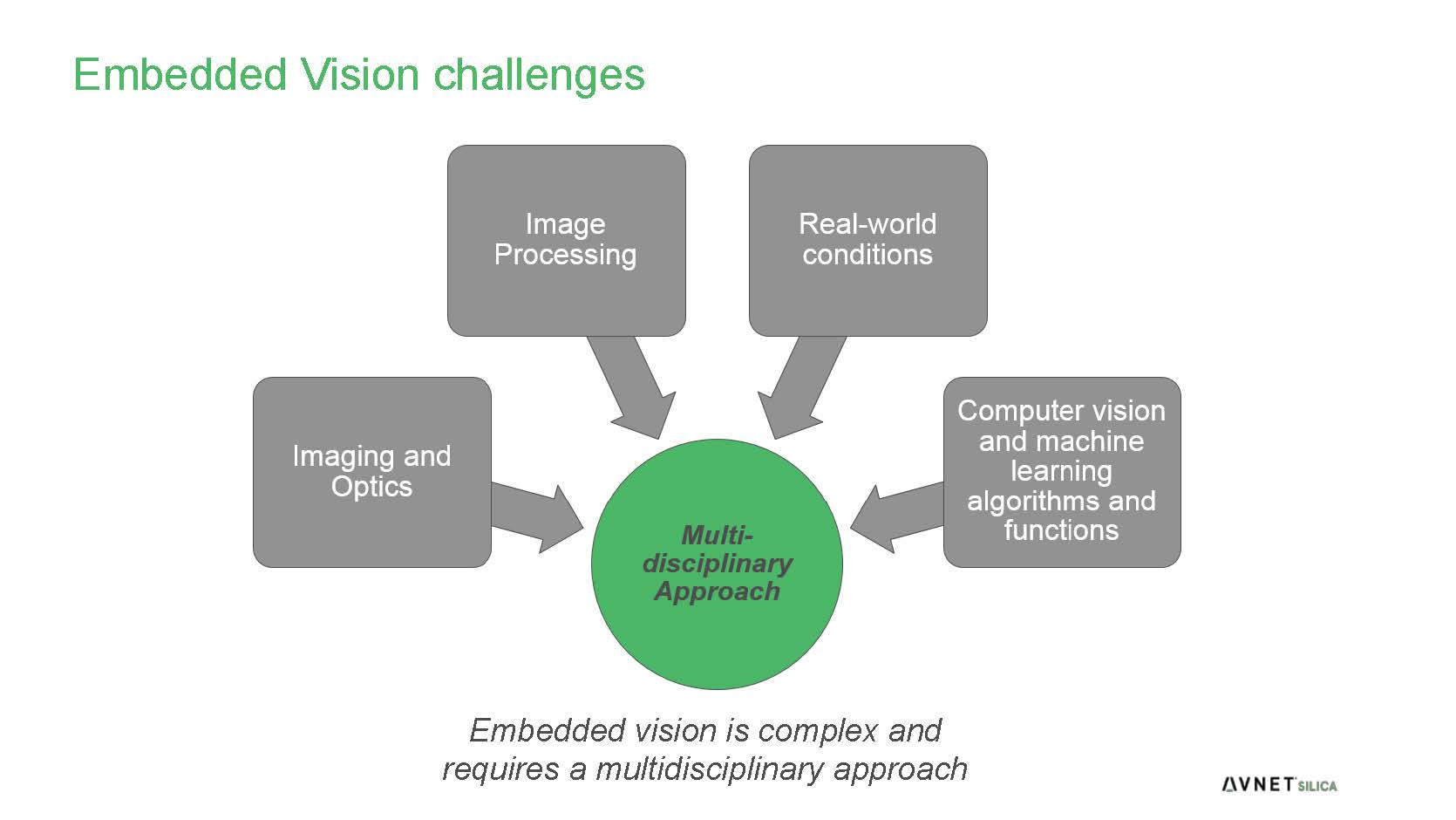
Embedded vision applications related to IoT systems typically require a wireless, Ethernet, or serial connection. Industrial applications related to machine vision usually require a GigEVision, USB3Vision or CoaxPress connection, said Uyttersprot.
“Connectors need to be robust and reliable, and depending on the application, this may be less or more important. For example, Avnet developed a multi-camera solution for autonomous applications in ADAS [advanced driver-assistance systems] and robotics. The solution includes GMSL SerDes (Gigabit Multimedia Serial Link serializer-deserializer) to reach a cable length up to 15 meters over coax cable to transfer video data up to 1.5Gb/s. In combination with FAKRA connectors, the solution provides a robust and reliable connection for autonomous applications where vibration, heat, or other external influences can affect video transmission.”
“AI is out there now, but in 2019 we’ll see the volume go up, and in 2020 and 2021, we’ll see a proliferation of AI-enabled devices in every market,” said Lou Lutostanski, vice president of IoT at Avnet. Avnet acquired SoftWeb Solutions in 2018 to address the need for a software interface that can communicate with IoT applications. “Now we are capable of doing device design and maximizing the potential of AI to help businesses make decisions with the information those devices can provide. AI plays a very important role in taking the data gathered from devices in the IoT and on the edge, and turning them into business insights.”
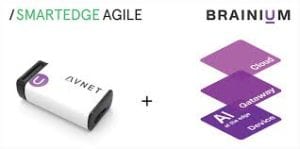
The new Brainium portal, a partnership between Avnet, Octonion, and Microsoft, is designed to help engineers and manufacturers deploy IoT projects with SmartEdge Agile, an IoT device developed by Avnet and powered by ST Micro’s STM32 micro-controller.
Businesses will be able to use those insights to activate functions like predictive equipment maintenance or ordering and fulfillment. Healthcare providers will be able to make decisions about medical information gathered by in-home monitoring devices. On the user level, AI will also simplify the user experience. “You won’t need to be a data scientist to access the potential of this,” said Lutostanski. “The technology is amazing but simplicity is part of the system.”
Interested in a specific market? Click a market below for current articles and news.
Automotive, Consumer, Industrial, Medical, Mil/Aero, Datacom/Telecom, and Transportation
- Where in the World is Amphenol LTW’s Luc Kan? - April 23, 2024
- TE Connectivity’s Sustainability Efforts Pay Off - April 23, 2024
- What is a VGA Connector? - April 23, 2024












